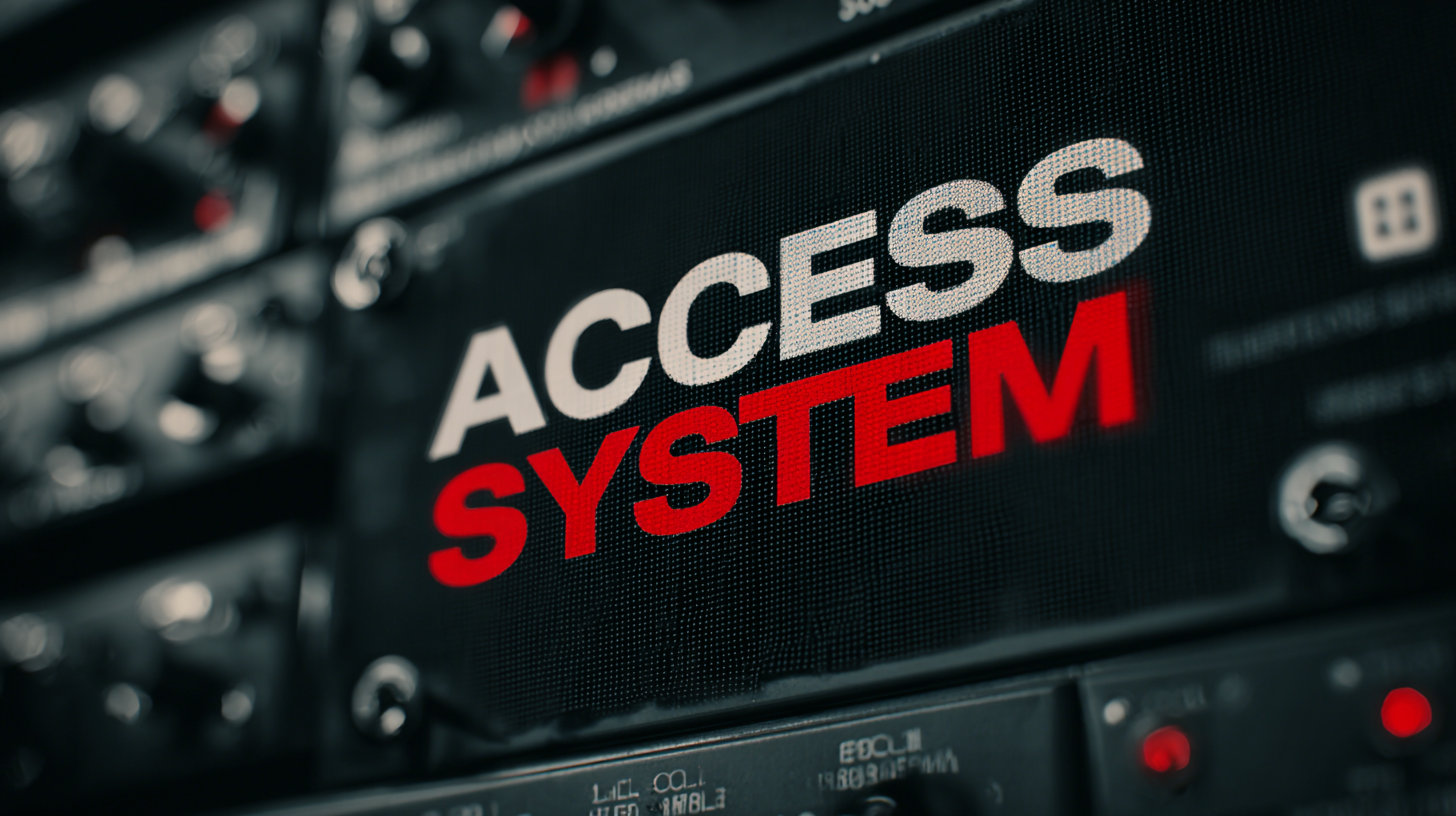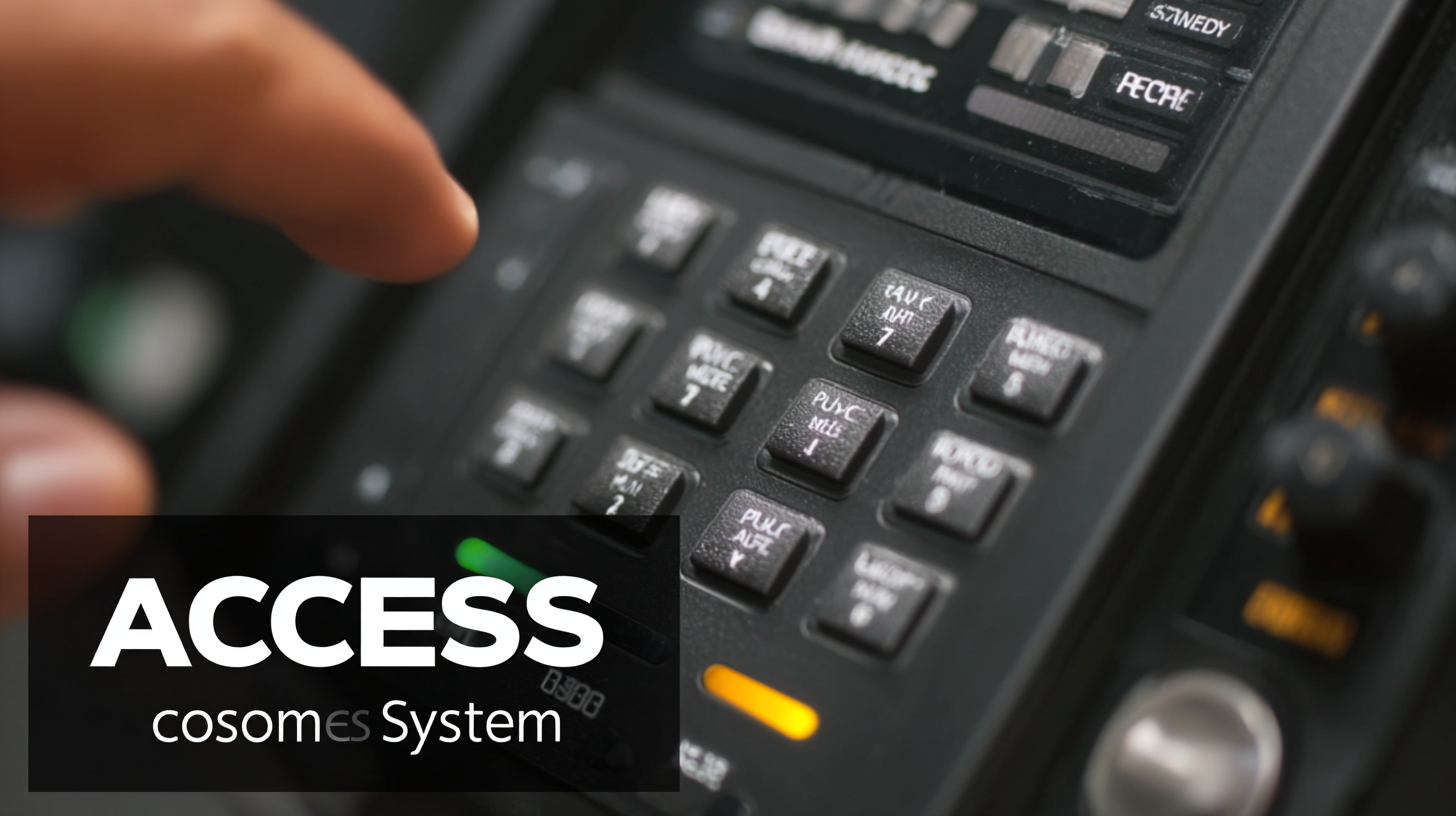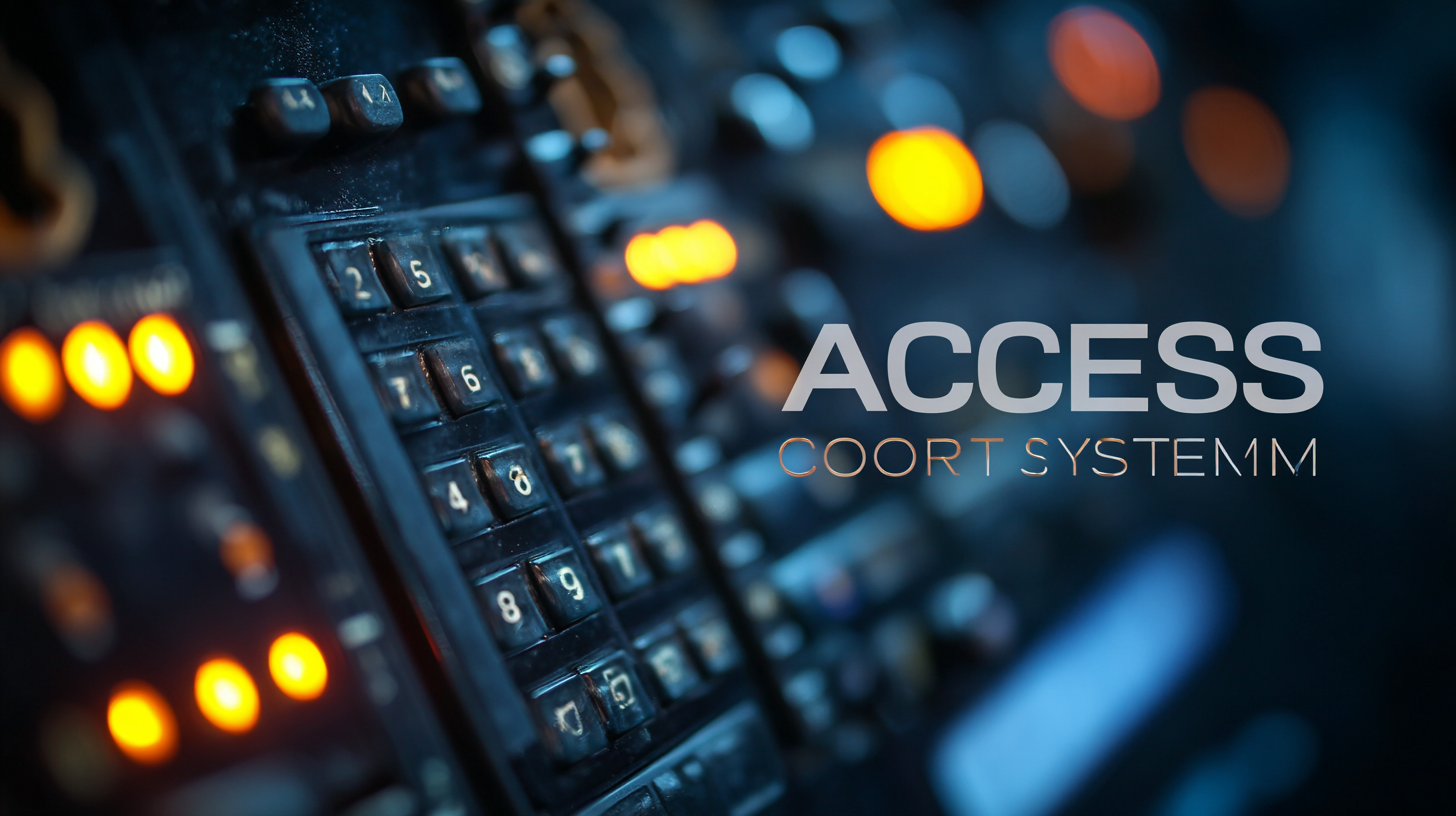Blog
How to Choose the Right Access Control System for Your Global Business Needs
In an increasingly interconnected world, the significance of robust security measures cannot be overstated, especially for global businesses. As the market for Access Control Systems is projected to grow significantly, reaching an estimated value of $12 billion by 2025, organizations must adapt their security strategies to meet diverse operational demands. According to recent industry reports, an increasing number of businesses are implementing advanced access control technologies to safeguard their assets amid rising security threats. With various options available—from biometric systems to cloud-based solutions—choosing the right Access Control System is critical for ensuring both physical and digital security across international borders. This blog will explore effective strategies and essential tips for selecting the ideal access control solutions tailored to your global business needs.

Understanding the Different Types of Access Control Systems for Global Businesses
When selecting an access control system for global business needs, understanding the various types available is crucial. There are generally three main categories: discretionary access control (DAC), mandatory access control (MAC), and role-based access control (RBAC). According to a report by MarketsandMarkets, the global access control market is expected to reach $13.22 billion by 2027, demonstrating the growing importance of implementing effective security solutions across organizations.
 Discretionary access control provides flexibility, allowing users to manage their own permissions, while mandatory access control enforces stricter policies, ideal for environments where compliance is critical, such as government facilities. Role-based access control, with its focus on user roles within an organization, is particularly appealing to companies with hierarchical structures, allowing businesses to streamline access management. A study by Gartner found that businesses adopting RBAC experienced up to a 34% reduction in permissions complexity, showcasing the significant efficiency gains that can be achieved through better access control strategy. Understanding these systems equips global entities with the knowledge needed to make informed decisions that cater to their security and operational requirements.
Discretionary access control provides flexibility, allowing users to manage their own permissions, while mandatory access control enforces stricter policies, ideal for environments where compliance is critical, such as government facilities. Role-based access control, with its focus on user roles within an organization, is particularly appealing to companies with hierarchical structures, allowing businesses to streamline access management. A study by Gartner found that businesses adopting RBAC experienced up to a 34% reduction in permissions complexity, showcasing the significant efficiency gains that can be achieved through better access control strategy. Understanding these systems equips global entities with the knowledge needed to make informed decisions that cater to their security and operational requirements.
Analyzing Industry-Specific Applications of Access Control Solutions
When selecting the right access control system for your global business needs, it's crucial to analyze specific applications that are tailored to your industry. Different sectors, such as healthcare, finance, and manufacturing, require distinct security measures and compliance standards. For example, healthcare facilities must prioritize patient confidentiality and comply with regulations like HIPAA, necessitating robust access control mechanisms that monitor and audit user access in real-time. Similarly, financial institutions face stringent regulations regarding data protection, which can be effectively managed with multi-factor authentication and advanced encryption technologies.
Furthermore, the emergence of the Industrial Internet of Things (IIoT) has transformed access control solutions across various industries. The IIoT enables real-time data analytics and monitoring, ensuring that access to critical systems and devices is both secure and efficient. Incorporating big data technology in enterprise information security management enhances decision-making processes related to access control, allowing organizations to respond swiftly to potential threats. As businesses scale globally, understanding these industry-specific applications will enable them to adopt access control systems that not only protect assets but also support operational efficiency and compliance.
How to Choose the Right Access Control System for Your Global Business Needs - Analyzing Industry-Specific Applications of Access Control Solutions
| Industry | Access Control Solution | Key Features | Compliance Needs | Scalability |
|---|---|---|---|---|
| Healthcare | Biometric Systems | Patient ID verification, audit trails | HIPAA Compliance | Highly scalable for multiple locations |
| Finance | Card Access Systems | Real-time monitoring, duress alarms | PCI DSS Compliance | Easily expandable for future growth |
| Education | Mobile Credentialing | Integration with student ID systems, remote management | FERPA Compliance | Flexible for growing campuses |
| Manufacturing | Turnstile Systems | Access control for production lines, visitor management | ISO Compliance | Adaptable to facility changes |
| Retail | Cloud-Based Access Control | Centralized management, remote access | GDPR Compliance | Scalable across multiple retail locations |
Key Features to Consider When Evaluating Access Control Systems
When evaluating access control systems for your global business needs, it’s essential to consider a variety of key features that can significantly impact security and usability.
First and foremost, scalability is crucial. As your organization expands, your access control system should seamlessly integrate with new locations and additional users without requiring an overhaul.
Look for systems that offer flexible deployment options, whether cloud-based or on-premises, to accommodate different business environments across geographies.
Another critical feature to consider is compatibility with existing security systems and technologies. Your access control system should be able to work in synergy with surveillance cameras, alarm systems, and other security measures to create a comprehensive security framework.
Moreover, user management capabilities are vital; advanced systems allow for easy role assignment and audit trails, ensuring that employees only have access to what they need while maintaining compliance with global data protection regulations.
Evaluate these features carefully to ensure that your access control system effectively supports the unique demands of your business landscape.
Integrating Access Control with Existing Security Infrastructure
As businesses operate on a global scale, integrating access control systems with existing security infrastructures becomes increasingly essential. The global physical security information management market is anticipated to expand significantly, projected to grow at a compound annual growth rate (CAGR) of 21.3% from 2023, reaching an estimated value of USD 3.40 billion by 2030. This growth highlights the urgency for organizations to adopt comprehensive access control measures that work in tandem with current systems to enhance security protocols.
To achieve a seamless integration, adopting Zero Trust principles can be instrumental. These solutions emphasize strict identity verification and continuous monitoring, ensuring that only authorized personnel have access to sensitive areas. Best practices for integrating Zero-Trust Network Access (ZTNA) can help businesses minimize security risks while optimizing costs. Implementing context-aware access control not only enhances visibility over assets but also secures remote access to critical infrastructure, fostering a robust security environment that meets the evolving demands of modern enterprises.
With the integration of advanced technologies, such as biometric authentication and offline processing, organizations can further strengthen their access control frameworks. By making informed choices about their security infrastructure and leveraging industry trends, businesses can ensure a future-proof approach that prioritizes both safety and operational efficiency.

Assessing Compliance and Regulatory Standards in Access Control Systems
In the evolving landscape of global business, selecting the right access control system necessitates a thorough understanding of compliance and regulatory standards. As organizations face stringent regulations such as GDPR, HIPAA, and PCI DSS, choosing an access control system that aligns with these requirements is crucial for minimizing risk exposure. Recent industry reports indicate that the global cybersecurity audit market is projected to grow significantly, reaching an estimated value of $30 billion by 2025, with a compound annual growth rate (CAGR) of 12.5%. This growth highlights the increasing importance of robust compliance measures in access control systems.
Access control systems can be audited at multiple levels, including system-level, application-level, and user-level audits. Each type serves a specific purpose in evaluating compliance and identifying vulnerabilities. According to industry analysis, application-level audits, particularly those focused on risk assessment and intrusion detection, account for the largest market share, as businesses seek to identify potential weaknesses in their cybersecurity posture. Moreover, with the rise of threats such as data breaches, the demand for thorough testing systems has also seen a notable increase, reflecting a global business environment that prioritizes security and compliance.
